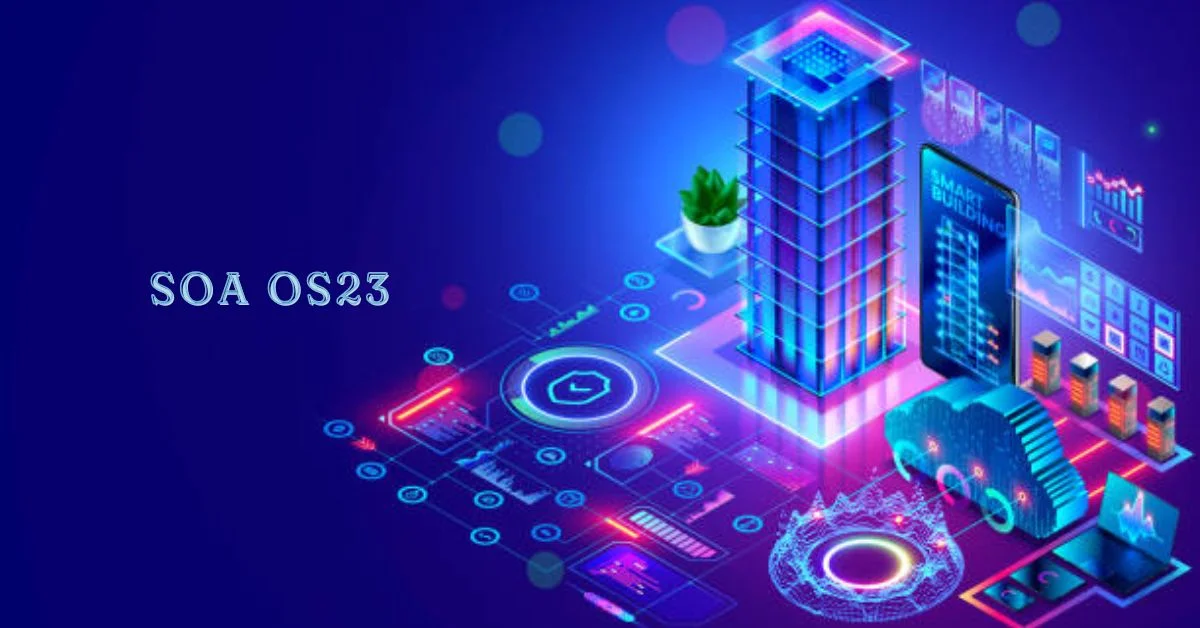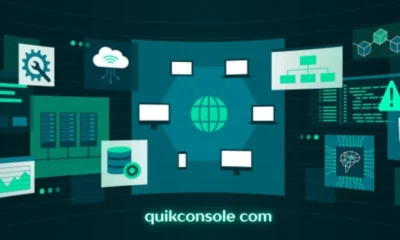Tech
001-gdl1ghbstssxzv3os4rfaa-3687053746: A Deep Dive into Encrypted Multi-Layer Identifiers for Modern Systems

Introduction to Encrypted Multi-Layer Identifiers
In an increasingly interconnected world, the need for secure and efficient identification systems has never been more critical. Enter Encrypted Multi-Layer Identifiers (EMIDs), a groundbreaking approach designed to enhance privacy and protection in modern digital environments. These identifiers offer a unique blend of security and functionality, making them ideal for various applications—from online transactions to access control in smart buildings.
Imagine a system that not only safeguards your data but also streamlines how we interact with technology. EMIDs are at the forefront of this evolution, addressing many challenges associated with traditional identification methods. Dive into the fascinating realm of EMIDs as we explore their advantages, generation processes, security measures, real-world applications, and what the future holds for this innovative technology. The journey promises insights that could reshape our understanding of digital identity management forever.
Advantages and Use Cases of EMIDs
Encrypted Multi-Layer Identifiers (EMIDs) provide unique benefits tailored to the evolving demands of contemporary data protection.Their layered structure ensures robust protection against unauthorized access, making them ideal for sensitive information.
One major use case is in healthcare systems. EMIDs can safeguard patient records while allowing seamless sharing among authorized personnel. This enhances trust and efficiency within the medical community.
Financial institutions also benefit from EMIDs. They provide a secure way to identify transactions without exposing personal details, reducing fraud risk significantly.
Moreover, e-commerce platforms are leveraging these identifiers for customer verification processes. By using EMIDs, businesses improve user experiences while maintaining high-security standards.
In IoT devices, EMIDs enhance device-to-device communication by ensuring each interaction remains confidential and verified. This paves the way for smarter homes and cities where data privacy is paramount.
How EMIDs are Generated and Managed
Encrypted Multi-Layer Identifiers (EMIDs) are generated through a sophisticated process that ensures both uniqueness and security. Initially, these identifiers rely on robust algorithms that create complex strings from various data inputs. This may include user information, timestamps, or device specifications.
Once the raw data is gathered, encryption techniques transform it into an unreadable format. These methods guard against unauthorized access while maintaining the integrity of the identifier.
Management of EMIDs involves continuous monitoring and updating to keep pace with emerging threats. Organizations typically employ dedicated software solutions designed for this purpose.
These systems allow for easy tracking and retrieval of EMIDs as needed, ensuring efficient use in various applications—from secure transactions to identity verification processes. Regular audits also play a key role in optimizing performance and enhancing security measures associated with EMID management.
Security Measures in Place for EMIDs
To ensure the integrity and safety of Encrypted Multi-Layer Identifiers (EMIDs), robust security measures are crucial. These identifiers incorporate advanced encryption techniques, making unauthorized access nearly impossible.
Each EMID is generated using complex algorithms that create unique sequences. This randomness enhances their resilience against potential cyber threats.
Additionally, multi-layer architecture adds another layer of protection. By compartmentalizing data and separating various identification layers, even if one layer is compromised, others remain secure.
Regular audits and updates to the encryption protocols keep these systems ahead of emerging vulnerabilities. Continuous monitoring helps identify any suspicious activities in real-time.
Moreover, employing machine learning can aid in detecting anomalies associated with EMID usage patterns. This proactive approach significantly mitigates risks while ensuring user privacy remains intact throughout the process.
Challenges and Limitations of EMIDs
Encrypted Multi-Layer Identifiers (EMIDs) are impressive, but they come with their own set of challenges. One major concern is the complexity involved in their implementation. Organizations must invest significantly in training and resources to properly manage EMID systems.
Another limitation lies in scalability. As businesses grow, maintaining a robust EMID framework can become burdensome. This often leads to potential bottlenecks that affect efficiency and performance.
Data integrity remains a pressing issue as well. Ensuring that identifiers remain unique while preventing unauthorized access or manipulation requires constant vigilance.
Moreover, technology evolves rapidly, posing compatibility issues with legacy systems. Integrating new standards into older platforms may hinder functionality if not managed carefully.
There’s the question of user adoption. Employees might resist transitioning to EMIDs due to unfamiliarity or perceived complexity, which can slow down deployment efforts across organizations.
Comparison with Other Identification Technologies
When examining Encrypted Multi-Layer Identifiers (EMIDs), it’s essential to compare them with existing identification technologies. Traditional methods, such as usernames and passwords, often fall short in terms of security. They are vulnerable to breaches via phishing schemes or brute-force hacking attempts.
Biometric systems offer another alternative, relying on unique physical traits like fingerprints or facial recognition. While biometric data is harder to replicate, privacy concerns abound regarding how this sensitive information is stored and handled.
In contrast, EMIDs provide a multi-layered approach that enhances both security and anonymity. By encrypting identifiers at multiple levels, they mitigate risks associated with data breaches while maintaining user privacy.
RFID technology also plays a role in identification but lacks the encryption features found in EMIDs. This makes RFID more vulnerable to unauthorized scanning and tracking.
Each technology has its strengths and weaknesses; however, the robust architecture of EMIDs positions them as a compelling choice for modern applications requiring heightened security measures.
Real-World Applications of EMIDs
Encrypted Multi-Layer Identifiers (EMIDs) have found their way into various sectors, transforming how we secure and manage data.
In the healthcare industry, EMIDs help protect patient identities while ensuring that vital information remains accessible to authorized personnel. This enhances privacy without sacrificing efficiency.
Financial services also leverage EMIDs to authenticate transactions securely. Customers benefit from an extra layer of protection against fraud in online banking and e-commerce platforms.
Moreover, in supply chain management, EMIDs provide unique tracking capabilities for products. They streamline logistics by enabling real-time monitoring while safeguarding sensitive information.
Even smart cities are adapting this technology. EMIDs facilitate seamless communication between interconnected devices, improving urban living through enhanced security and efficiency.
From healthcare to finance and beyond, the versatility of EMIDs is evident as they pave the way for innovation across multiple fields.
Future Developments and Possibilities for EMIDs
The future of Encrypted Multi-Layer Identifiers (EMIDs) holds immense promise. As technology advances, the integration of artificial intelligence could enhance their generation and management processes. This would allow for more sophisticated algorithms that adapt to changing security landscapes.
Moreover, as data privacy regulations evolve globally, EMIDs can play a pivotal role in compliance. They offer a way to protect user identities while still enabling essential communication between systems.
Blockchain technology might also come into play. Utilizing decentralized ledgers could further secure the creation and tracking of EMIDs, ensuring integrity and trustworthiness across platforms.
Emerging industries like IoT are set to benefit significantly from this innovation. With countless devices needing unique identification, scalable and secure solutions become paramount for seamless operation. The possibilities are vast, paving the way for smarter ecosystems in various sectors.
Conclusion
Encrypted Multi-Layer Identifiers (EMIDs) represent a significant advancement in how we manage identity and security in modern systems. As technology continues to evolve, the integration of EMIDs can provide enhanced protection and flexibility for organizations across various sectors.
The advantages of using EMIDs are evident in their ability to offer robust security, improved privacy, and streamlined processes. From healthcare to finance, businesses are already leveraging these identifiers to safeguard sensitive information while maintaining compliance with regulations.
Understanding how EMIDs are generated and managed is crucial for those looking to implement this technology. With strong encryption methods in place, along with strategic management practices, organizations can confidently navigate the complexities of digital identification.
Despite their many benefits, challenges remain. Organizations need to tackle possible constraints concerning scalability and system compatibility. However, ongoing advancements suggest that these hurdles will be overcome as demand for secure identification solutions grows.
As industries continue adopting EMIDs at an increasing pace, real-world applications demonstrate the practicality and effectiveness of this innovative approach. Future developments promise even greater capabilities, likely expanding the role of EMIDs within various fields.
The journey toward widespread adoption may still have some twists ahead but clearly points towards a future where Encrypted Multi-Layer Identifiers play a pivotal role in securing our digital identities comprehensively.
Tech
dgh a Ophthalmic Devices: Scanmate A & Flex Technology Guide

Introduction to Ophthalmic Devices
Ophthalmic devices play a crucial role in the world of eye care, revolutionizing how practitioners diagnose and treat various conditions. With advanced technology continuously evolving, it’s essential to stay updated on the latest tools that can enhance patient outcomes. Among these innovations, dgh a has emerged as a game-changer for professionals seeking precision and efficiency in their practices.
This article explores the remarkable capabilities and innovations behind Scanmate A and Flex technology. Get ready to explore how these remarkable devices are transforming ophthalmology!
Overview of Scanmate A & Flex Technology
Scanmate A and Flex technology stand at the cutting edge of advancements in ophthalmic devices.Designed to enhance diagnostic accuracy, these tools empower eye care professionals with advanced imaging capabilities.
The Scanmate A offers high-resolution scanning that captures intricate details of the retina. Its user-friendly interface ensures quick operation, making it accessible for practitioners at all experience levels.
Flex technology complements this by introducing versatile imaging options. It adapts seamlessly to various examination requirements, ensuring comprehensive assessments without needing multiple devices.
Together, they streamline workflows and improve patient experiences. Practitioners can now focus more on patient care rather than being bogged down by complicated equipment setups. The combination of precision and flexibility makes these technologies a game-changer in modern eye care practices.
Benefits of Using These Technologies
The adoption of Scanmate A and Flex technology in ophthalmic practices brings numerous advantages. These advanced devices enhance diagnostic accuracy significantly. Clinicians can identify subtle changes in eye health that may go unnoticed with traditional methods.
User-friendly interfaces streamline the workflow, allowing practitioners to focus more on patient care rather than grappling with complex equipment. This streamlined efficiency not only reduces time spent but also enhances the overall patient experience during visits.
Furthermore, these technologies facilitate better communication among healthcare teams. Data sharing becomes seamless, helping ensure all professionals involved are on the same page regarding a patient’s condition.
Another noteworthy benefit is the potential for improved treatment outcomes. Early detection enabled by these tools allows for timely intervention, leading to better management of eye diseases and overall vision preservation.
Key Features and Functions
Scanmate A and Flex technology stand out in the realm of ophthalmic devices. They offer precision that eye care specialists crave.
One key feature is their advanced imaging capabilities. These devices produce high-definition images, enabling precise and in-depth analysis of various ocular conditions.
Flex technology enhances this with its adaptable design, catering to various diagnostic needs. Practitioners can easily switch between different functionalities based on patient requirements.
User-friendliness is another highlight. The intuitive interface reduces the learning curve, enabling quick adoption within clinical settings.
Moreover, both devices incorporate real-time data sharing features. This promotes collaboration among healthcare professionals and improves patient outcomes significantly.
The strong durability of these devices significantly enhances their overall appeal. Built to withstand daily use in busy practices, they combine functionality with reliability seamlessly.
Comparison with Other Ophthalmic Devices
When comparing Scanmate A and Flex technology with other ophthalmic devices, several distinctions emerge. Their user-friendly interfaces streamline workflow, setting them apart from older models that often require extensive training.
The precision of these technologies is noteworthy, particularly in measuring visual acuity and eye health parameters. Many traditional devices struggle to match this level of accuracy, limiting their effectiveness in diagnosing conditions early.
Furthermore, the integration capabilities of Scanmate A and Flex allow for seamless data sharing within a practice. This contrasts sharply with legacy systems that may operate in isolation or lack compatibility with modern electronic health records.
Durability and maintenance also play crucial roles. The robust design of these devices reduces downtime compared to others prone to wear and tear over time. Practices benefit from fewer disruptions during patient care as a result.
Real-Life Applications and Success Stories
Ophthalmic devices like Scanmate A and Flex technology have made significant strides in the field of eye care. Practitioners worldwide are witnessing transformative results.
One inspiring case involved a busy ophthalmology clinic that integrated these technologies into their workflow. They reported a 30% increase in patient throughput, allowing them to serve more individuals while maintaining high-quality care.
Another success story comes from a rural health facility that previously struggled with outdated equipment. With the introduction of Scanmate A, they improved diagnostic accuracy for conditions like diabetic retinopathy. This led to earlier interventions and better patient outcomes.
Moreover, an optometrist shared how Flex technology facilitated remote consultations during challenging times. It enabled him to connect with patients effectively, ensuring continuity of care without sacrificing quality. These stories highlight the potential impact on practices and communities alike.
How to Choose the Right Ophthalmic Device for Your Practice
Selecting the ideal ophthalmic device for your practice involves several crucial factors. Start by assessing your specific needs. Consider the types of examinations you regularly perform and any specialties your practice emphasizes.
Next, evaluate technological features. Devices like the dgh a offer advanced imaging capabilities that can enhance diagnostic accuracy. Look for user-friendly interfaces and integration with existing systems to streamline workflows.
Think about patient comfort as well. A device that minimizes discomfort can lead to better compliance during examinations, fostering a more positive experience.
Factor in budget constraints while keeping quality in mind. Investing in reliable equipment may save costs long-term through durability and reduced maintenance needs. With careful consideration of these elements, you’ll be equipped to make an informed choice tailored to your practice’s unique demands.
Conclusion
Selecting the appropriate ophthalmic device can greatly elevate the effectiveness of your practice.The dgh a line, particularly the Scanmate A and Flex technology, offers advanced features that set them apart from traditional options. These devices not only improve diagnostic accuracy but also streamline workflows, allowing for better patient care.
As you consider how to integrate new technologies into your practice, reflect on the unique benefits offered by these devices. Their versatility and effectiveness make them suitable for various applications in eye care. Whether you’re aiming to upgrade existing equipment or invest in cutting-edge solutions, understanding what each option brings is essential.
Arming yourself with knowledge about these ophthalmic devices will enable you to make informed decisions that align with your practice’s goals and ultimately benefit your patients. Embracing innovation like dgh a’s offerings could be pivotal for future success in the ever-evolving field of ophthalmology.
Tech
Trackr.fr Tech Reviews: Gaming Hardware & XR Insights 2025

Introduction to Trackr.fr
Welcome to Trackr.fr, your go-to destination for the latest in gaming hardware and extended reality insights! As technology continues to evolve at an unprecedented pace, we’re here to keep you informed about what’s next on the horizon. Whether you’re a hardcore gamer or just curious about XR advancements, our Tech Reviews will guide you through the innovations shaping these exciting realms. Get ready for a deep dive into cutting-edge gear and trends that are set to redefine how we play and interact with virtual worlds in 2025. Join us as we explore everything from powerful new consoles to immersive experiences that blur the lines between reality and imagination. Buckle up; it’s time for an exhilarating journey!
Latest Gaming Hardware Reviews
The gaming hardware landscape is constantly evolving, and our latest reviews at Trackr.fr tech highlight some standout products. The newest GPUs are pushing boundaries with unprecedented performance and ray-tracing capabilities, ensuring that gamers can enjoy stunning visuals.
We’ve also seen exciting developments in gaming consoles. The latest generation promises faster load times and enhanced graphics. With exclusive titles leveraging this power, anticipation is building among fans.
Don’t overlook peripherals either. High-refresh-rate monitors paired with responsive mechanical keyboards elevate the experience for competitive gamers. These tools enhance not just gameplay but overall enjoyment.
New VR headsets provide immersive experiences like never before. Enhanced resolution and improved tracking technology create worlds that feel incredibly real, fostering deeper connections to games we love. Keep following us as we delve deeper into these groundbreaking innovations!
Upcoming XR (Extended Reality) Technology Trends
The landscape of XR technology is shifting rapidly. Innovations are emerging, transforming how we interact with digital environments.
A major buzzworthy trend emerging is the growing prominence of mixed reality. This fusion allows users to experience both virtual and real-world elements simultaneously. Gaming developers are exploring this avenue, creating immersive experiences that blend gameplay with physical surroundings.
Another trend gaining traction is social XR platforms. As more people seek connection online, these platforms enable shared experiences in virtual spaces. Gamers can enjoy multiplayer interactions like never before, enhancing collaboration and community engagement.
Moreover, advancements in haptic feedback technologies promise to revolutionize user immersion. Players will soon feel sensations that mirror their actions within games, adding a new layer to the gaming experience.
AI integration in XR applications offers personalized content tailored to individual preferences and behaviors. As these trends unfold, they pave the way for an exciting future where boundaries between reality and imagination blur even further.
Predictions for the Future of Gaming and XR in 2025
As we look ahead to 2025, the convergence of gaming and XR will redefine how players interact with digital worlds. Immersive experiences will become more seamless, blurring the lines between reality and virtual realms.
Expect advancements in hardware that amplify realism. Enhanced haptic feedback and AI-driven NPCs will make games feel alive. Players might even engage in multiplayer environments where physical presence is felt through VR suits.
Cloud gaming technologies are set to revolutionize access. With higher bandwidths, users can enjoy high-quality graphics without heavy local processing power. This accessibility could usher in a new wave of gamers from diverse backgrounds.
Social interaction within these spaces will also evolve. Virtual gatherings may replace traditional meet-ups, creating communities around shared adventures rather than just competition.
Storytelling is poised for transformation as well. Developers may employ dynamic narratives that adapt based on player choices, ensuring each journey feels distinct and personal.
Impact on the Gaming Industry and Consumers
The impact of emerging gaming hardware and XR technology is profound. Developers are now pushing boundaries, creating immersive experiences that go beyond traditional gameplay.
Consumers benefit from these advancements as games become more interactive and engaging. This shift in technology invites players to explore new worlds like never before.
Furthermore, the accessibility of high-quality gear means a broader audience can participate in this evolving landscape. Gamers no longer need specialized setups to enjoy enhanced experiences.
As competition increases among tech companies, innovation accelerates. This leads to enhanced products becoming available to consumers at more affordable prices.
With VR headsets and AR devices becoming mainstream, the way we perceive gaming will continue to evolve dramatically. Players are eager for fresh content that leverages these breakthroughs.
Both developers and gamers find themselves on a thrilling journey into uncharted territories within the industry.
Expert Interviews and Insights from Industry Leaders
At Trackr.fr, we’re fortunate to engage with leading innovators and top experts shaping the future of gaming and XR technology. Their insights illuminate the path forward.
One industry leader emphasized the importance of user experience. They believe that seamless integration will define success in both gaming and XR environments.
Another expert shared thoughts on sustainability within tech development. As hardware becomes more powerful, they argue for an eco-conscious approach to manufacturing.
We also heard from a developer who is excited about AI’s role in future games. They envision dynamic storytelling evolving based on player choices—making each journey unique.
These conversations not only broaden our understanding but also spark innovation across platforms. The voices shaping tomorrow’s trends are as diverse as the technologies themselves, driving us toward an exhilarating future where anything feels possible.
Conclusion: Embracing the Evolution of Gaming and XR Technology
As we look to the future, it’s evident that gaming and XR technology are on an exciting trajectory. The innovations emerging in hardware and software continue to reshape how players engage with their favorite titles. With brands pushing the boundaries of what’s possible, consumers can expect immersive experiences like never before.
Trackr.fr keeps you updated on these developments, ensuring you’re always informed about the latest tech trends. Embracing this evolution means staying ahead of the curve and experiencing gaming in ways previously thought impossible. Whether through enhanced graphics or interactive environments, the world of gaming is transforming rapidly.
The fusion of entertainment and technology will undoubtedly redefine not just games but how we perceive reality itself. As gamers and tech enthusiasts gear up for what lies ahead, one thing is certain: Trackr.fr will be there every step of the way, bringing you insights into this thrilling journey.
Tech
SOA OS23 Framework: Next-Gen Service Architecture for 2025

Introduction to SOA OS23 Framework
The digital landscape is evolving at an astonishing pace, pushing businesses to adapt and innovate. Enter the SOA OS23 framework a revolutionary approach to service-oriented architecture that is set to redefine how organizations build and manage their IT ecosystems by 2025. This next-gen framework promises flexibility, scalability, and efficiency, allowing companies to stay ahead in a competitive market. As we delve into the intricacies of this cutting-edge solution, you’ll discover why the SOA OS23 framework could be your key to unlocking unprecedented growth and opportunity in a rapidly changing world. Buckle up; it’s time for a deep dive into what makes SOA OS23 so compelling!
Evolution of Service-Oriented Architecture (SOA)
Service-Oriented Architecture (SOA) has come a long way since its inception. Originally, it emerged in response to the need for more flexible and scalable software systems. Traditional monolithic architectures limited agility and innovation.
As businesses faced increasing complexity, SOA provided a solution. It allowed developers to create loosely coupled services that communicate over networks. This shift enabled faster deployment and easier maintenance of applications.
Over time, SOA evolved with advancements in technology such as web services, microservices, and cloud computing. Each iteration brought enhanced capabilities and better integration options.
The rise of APIs also transformed how organizations leveraged SOA principles. Companies began exposing their services externally for greater collaboration and interoperability.
Today’s digital landscape demands even more from architecture frameworks. The evolution continues as organizations pursue more efficient ways to harness data while ensuring seamless user experiences across platforms.
Key Features of SOA OS23 Framework
The SOA OS23 Framework introduces a range of innovative features designed to enhance service architecture. One standout element is its modular design, allowing organizations to create and integrate services with ease.
Interoperability is another key aspect. The framework supports multiple protocols and standards, ensuring seamless communication across various platforms. This flexibility enables businesses to adapt quickly in a fast-paced digital landscape.
Enhanced security measures are built into the architecture as well. With advanced authentication and authorization processes, organizations can safeguard their data while maintaining efficient operations.
Additionally, SOA OS23 emphasizes scalability. Companies can effortlessly scale their services up or down based on demand without compromising performance.
An intuitive user interface makes it easier for developers to navigate the system. This accessibility promotes collaboration and accelerates development cycles significantly.
Benefits of Adopting SOA OS23 Framework
Adopting the SOA OS23 Framework brings numerous advantages for organizations looking to enhance their service architecture. One significant benefit is its agility. Businesses can quickly adapt to changing market demands, allowing them to stay competitive.
Scalability is another key feature of SOA OS23. Companies can easily expand their services without overhauling existing systems. This flexibility reduces downtime and operational costs.
Interoperability enhances communication between diverse systems and platforms. By embracing standard protocols, businesses ensure that different applications work seamlessly together.
Moreover, the focus on microservices improves resource allocation. Teams can develop, test, and deploy services independently, promoting innovation without disrupting other operations.
Enhanced security measures integrated into the framework help protect sensitive data while maintaining compliance with industry regulations making it a robust choice for modern enterprises aiming for growth in 2025 and beyond.
Real-World Applications and Success Stories
The SOA OS23 framework is making waves across various industries. Businesses are harnessing its potential to streamline operations and enhance agility.
For example, in the healthcare sector, a prominent hospital network integrated SOA OS23 to create a unified patient management system. This shift improved data sharing between departments, resulting in faster diagnoses and treatment plans.
In retail, an e-commerce giant adopted this architecture to personalize customer experiences. By analyzing user behavior in real-time, they delivered tailored product recommendations that boosted sales significantly.
Banks and financial organizations also utilize the SOA OS23 framework to ensure safe and reliable transactions. Its modular design allows them to implement robust security protocols without overhauling existing systems.
These stories showcase the versatility of the SOA OS23 framework and its capacity to drive innovation across different sectors. Organizations embracing this technology find themselves better equipped for future challenges.
Comparison with Traditional SOA Frameworks
The SOA OS23 framework represents a significant leap from traditional service-oriented architecture. Traditional SOA often relies on rigid, monolithic structures that can lead to bottlenecks and limited scalability.
In contrast, the SOA OS23 framework promotes a more agile approach. It utilizes microservices that allow for independent scaling of each component. This adaptability is essential for thriving in today’s rapidly evolving digital environment.
Moreover, traditional frameworks typically struggle with integration complexities. The SOA OS23 simplifies this through its standardized protocols and APIs, fostering seamless communication between services.
While legacy systems might focus heavily on compliance and governance, the new framework emphasizes innovation and adaptability. As businesses evolve rapidly, this responsiveness becomes essential for staying competitive in diverse markets.
Embracing the SOA OS23 means moving beyond outdated methodologies to harness modern technology’s full potential.
Challenges and Future Outlook for SOA OS23 Framework
The SOA OS23 Framework presents exciting opportunities, but it’s not without its challenges. One primary concern is the complexity of integration with existing systems. Many organizations have legacy architectures that may struggle to adapt to new service-oriented paradigms.
Security remains a pressing issue as well. With increased connectivity, the risk of data breaches and cyber threats escalates significantly. Organizations must prioritize robust security measures to protect sensitive information.
Looking ahead, there’s potential for enhanced adaptability in various sectors. As businesses increasingly embrace cloud technologies and microservices, the demand for flexible frameworks like SOA OS23 will grow.
Moreover, ongoing advancements in AI and machine learning could further streamline operations within this architecture. The integration of these technologies may revolutionize how services interact and enhance overall efficiency across platforms.
Staying ahead requires continuous innovation and investment from enterprises willing to harness the full power of SOA OS23 while navigating its complexities effectively.
Conclusion
The SOA OS23 Framework represents a significant leap forward in service architecture, paving the way for businesses to adapt and thrive in an increasingly digital landscape. As organizations seek agility, scalability, and efficiency, this next-generation framework addresses many of the challenges faced by traditional SOA implementations.
With its innovative features and benefits, adopting the SOA OS23 Framework can lead to improved operational performance. Companies that embrace this framework are better positioned to respond to market changes and customer needs effectively.
Real-world applications demonstrate how enterprises have successfully leveraged the SOA OS23 Framework for transformative outcomes. These success stories highlight not only versatility but also tangible advantages across various industries.
While there may be challenges ahead as organizations implement this new paradigm, the future outlook remains positive. The continuous evolution of technology will likely further enhance capabilities within service-oriented architectures.
Organizations looking to remain competitive should consider investing time into understanding and integrating the SOA OS23 Framework into their existing structures. Adapting now could set them up for greater success in 2025 and beyond.
-

 Business1 week ago
Business1 week agoCrypto 30x.com: Redefining Cryptocurrency Trading with Smart Leverage and Secure Tools
-

 Tech1 week ago
Tech1 week agoQuikconsole Com: Revolutionizing Web-Based Server Management for Devs and Sysadmins
-

 Lifestyle7 days ago
Lifestyle7 days agoMike Wolfe Passion Project: Breathing Life into LeClaire
-

 Tech2 weeks ago
Tech2 weeks agogeneralraspberry8102: The All-in-One Solution Transforming Education, Automation, and Creative Tech
-

 Business5 days ago
Business5 days agoA&TA 2025: Master Change Through Awareness and Action
-

 Tech2 weeks ago
Tech2 weeks agoPrizmatem: How Micro-Prism Innovation Is Shaping the Next Era of Lightweight Optical Technology
-

 General1 week ago
General1 week agoSodiceram Insights: The Material That’s Rewriting the Rules of Modern Ceramics
-

 Business1 week ago
Business1 week agoKennedy Funding Ripoff Report: Exposing the Myths, Revealing the Truth Behind the Accusations



